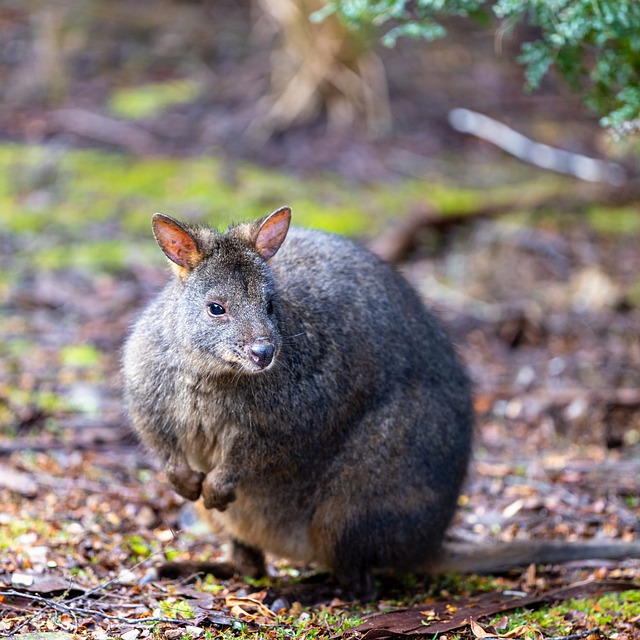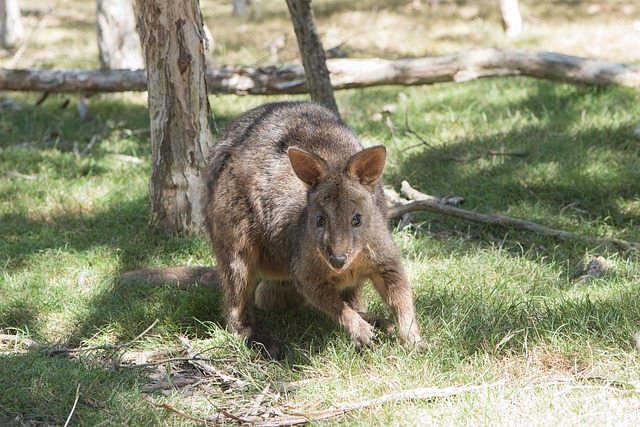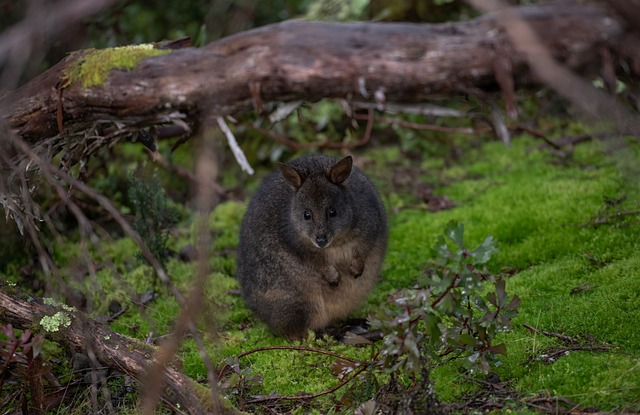Pademelons are small marsupials native to Australia and New Guinea. Here are 50 interesting facts about pademelons:
Scientific Name: Pademelons belong to the genus Thylogale.
Species: There are several species of pademelons, including the red-legged pademelon, the Dusky pademelon, and the red-necked pademelon.
Size: Pademelons are small marsupials, typically measuring around 12 to 28 inches (30 to 70 cm) in length, not including their tails.
Weight: They typically weigh between 4 to 12 pounds (2 to 5.5 kilograms).

Appearance: Pademelons have round faces, short tails, and short, soft fur. They are often brown or gray with a white or lighter-colored belly.
Distribution: They are found in eastern and northern Australia, as well as in New Guinea and nearby islands.
Habitat Range: Pademelons inhabit a variety of environments, including forests, woodlands, and grasslands.
Nocturnal: They are primarily nocturnal, meaning they are most active during the night.
Shy Behavior: Pademelons are generally shy and elusive animals, often avoiding human contact.
Herbivorous: They are herbivores, feeding primarily on a diet of grasses, leaves, and other plant material.
Grazing: Pademelons graze in grassy areas during the night, using their strong jaws and sharp teeth to crop vegetation.
Marsupials: Like other marsupials, pademelons give birth to undeveloped live young, which then continue to develop in their mother’s pouch.
Pouch: Female pademelons have a pouch to carry and nurse their young.
Reproduction Rate: They typically give birth to one offspring at a time, although occasionally twins can be born.
Solitary: Pademelons are often solitary animals, and you’ll rarely see them in groups.
Territorial: They establish territories and may defend them from other individuals.
Hopping: Like kangaroos, pademelons move by hopping on their powerful hind legs.
Natural Predators: Natural predators of pademelons include dingoes, eagles, and other carnivorous animals.
Vigilant: Due to their cautious nature, pademelons are always on alert for potential threats.
In the Wild: In the wild, pademelons typically live for 4 to 6 years.
In Captivity: In captivity, they may live longer, with some individuals reaching 10 years of age.
Strong Hind Legs: Their strong hind legs allow them to cover ground quickly when hopping and to escape from predators.
Tail: They have a short, muscular tail, which is not prehensile.
Vocalizations: Pademelons communicate with soft vocalizations, such as grunts and hisses.

Conservation Concerns: Some pademelon species are facing habitat loss and fragmentation due to human activities.
Protected Species: The red-necked pademelon is listed as a species of “Least Concern” by the International Union for Conservation of Nature (IUCN).
Grazers: They are considered grazers and primarily feed on low-lying vegetation.
Self-Grooming: Pademelons groom themselves by licking their fur to keep it clean.
Nocturnal Lifestyle: Being primarily active at night helps pademelons avoid daytime predators.
Maternal Care: Mother pademelons provide care and protection for their young.
Solitary: As mentioned earlier, pademelons are typically solitary animals and do not form large groups.
Camouflage: Their fur coloration helps them blend into their environment, providing some protection from predators.
Geographic Range: Different pademelon species have different geographic distributions, with some found only in specific regions.
Cold Tolerance: Some pademelon species can tolerate colder temperatures and may even have a thicker winter coat.
Seasonal Breeding: Breeding seasons can vary depending on the region and species.
Dietary Preferences: They have a varied diet, including grasses, leaves, and herbs.
Life Expectancy: Their lifespan can vary depending on factors such as predation risk, food availability, and environmental conditions.
Limited Reproduction: Pademelons have relatively low reproductive rates compared to some other marsupials.
Shelter Use: They seek shelter in dense vegetation or under cover during the day.
Territorial Marking: They may mark their territory with scent markings.
Soft Fur: Pademelons have soft, dense fur, which helps insulate them in colder climates.
Muscular Legs: Their strong leg muscles are essential for hopping and escaping from predators.
Efficient Digestion: They have an efficient digestive system adapted to extract nutrients from fibrous plant material.
Habitat Protection: Conservation efforts aim to protect their habitats from destruction.
Hard to Spot: Due to their shy and elusive nature, spotting pademelons in the wild can be challenging.
Population Fluctuations: The populations of some pademelon species can fluctuate due to factors like food availability and predation pressure.

Diverse Habitats: Pademelons inhabit a wide range of habitats, from forests to grasslands.
Conflict Avoidance: In areas where humans and pademelons coexist, efforts are made to minimize conflicts.
Herbivore Role: Pademelons play a role in shaping their ecosystems by influencing plant growth through grazing.
Regional Names: In different regions, pademelons may be known by various local names, reflecting their cultural significance.
Pademelons are fascinating marsupials with a unique set of adaptations that enable them to thrive in their respective habitats. Their elusive behavior and adaptability make them intriguing subjects for wildlife enthusiasts and researchers alike.
